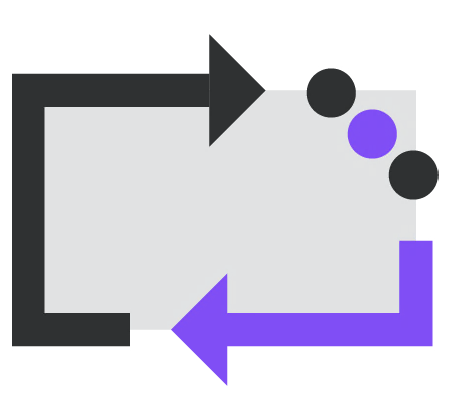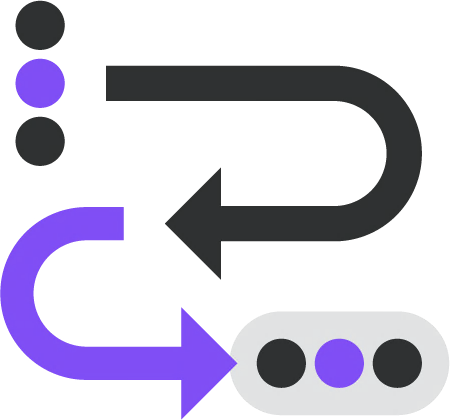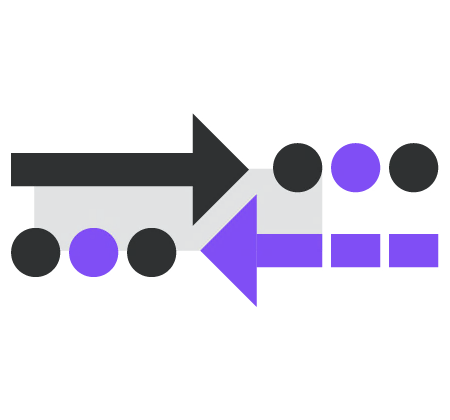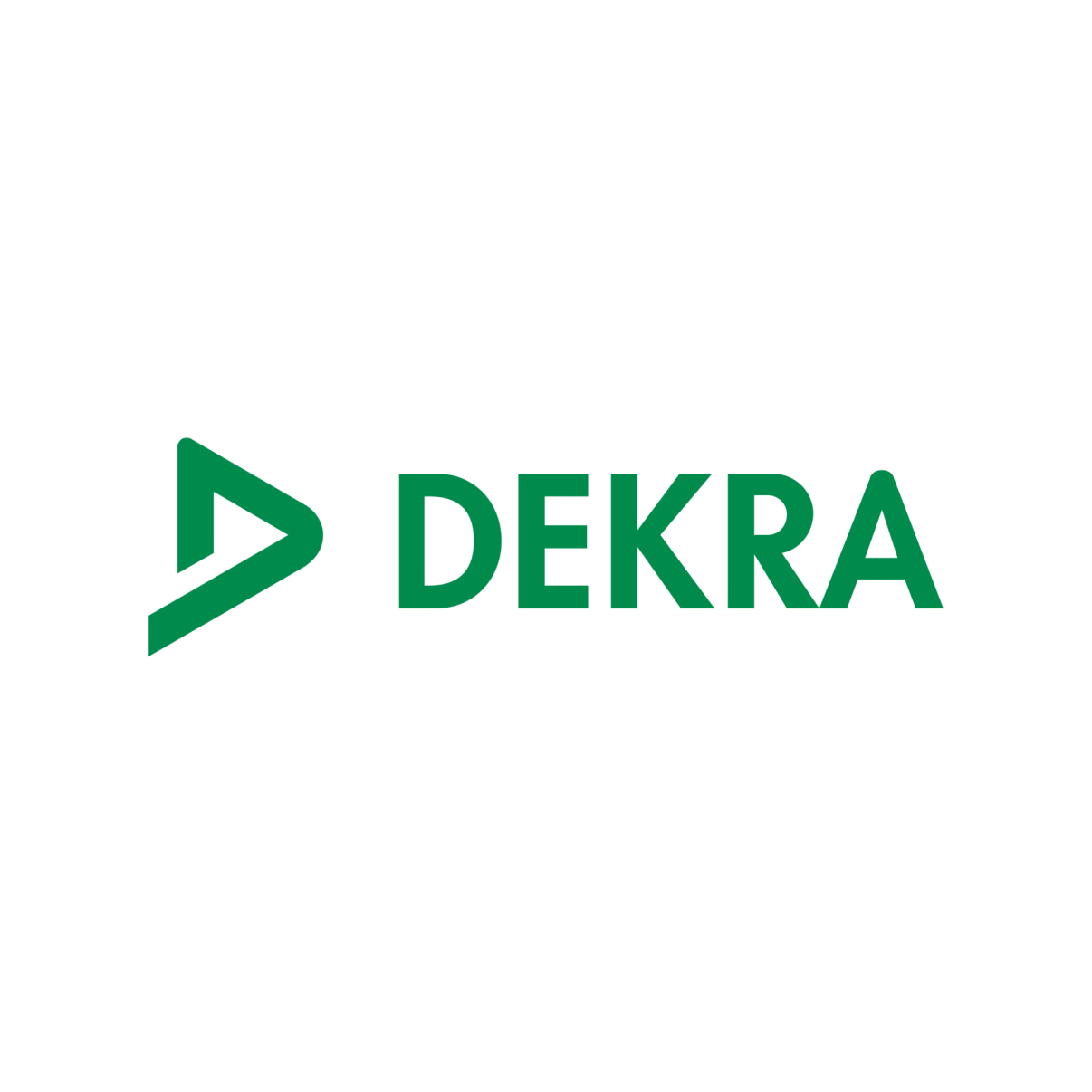Carbon Clarity
A deep dive into carbon impact labeling
LET’S MAKE CARBON IMPACT LABELING THE NEW NORM
Logitech uses a robust methodology that allows us to measure and analyze the life cycle of our products and assess the carbon impacts of each phase – from the sourcing of raw materials to the products’ end-of-life.
Life Cycle Analysis (LCA) helps us measure and continually improve our carbon impacts, but that’s not all. The carbon footprint on product labels allows you to make more informed decisions about how you want to reduce your own footprint.
When carbon impact labeling becomes mainstream and part of everyday life, like calories on nutrition labels, it will bring more clarity to the climate impact of purchasing decisions. That’s why we are open-sourcing the methodology to interested companies. The more we understand the carbon impact of our daily purchases, the better we will be able to reduce it.
Methodology Overview
There are four key phases to the LCA: sourcing and manufacturing, transportation and storage, in-use, and end-of-life. Each of these phases comes with its own set of critical focus areas that will shape the final carbon impact of a product.
Our multi-step, third-party reviewed methodology conforms to international good practice standards ISO 14067 and ISO 14044. These steps include:

Phase 1
SOURCING AND MANUFACTURING
This phase measures the impact of manufacturing the product. We consider every detail from raw material extraction all the way to assembling constituent parts. We work with suppliers to gather insights into the manufacturing process to create a clear picture of the total carbon impacts during this phase.
Getting the numbers down
We are continually looking to reduce the carbon footprint of each phase of the product life cycle. We introduce changes in how we design and manufacture products even after launch so that we can reduce product weight and use fewer resources without impacting product performance.
Raw Materials
We look at the impacts generated during the creation, collection, or extraction of raw material - the methods used and their associated impacts.
We then measure any impacts from the transportation of these materials from source to factory, and review how to improve on the methods and logistics we employ in this phase.
Production
We analyze and measure the carbon impacts during production for all parts of a given product according to the Bill of Materials, which is a list of the raw materials, assemblies, subassemblies, parts and components, as well as the quantities of each needed to manufacture a product. This phase also includes the mechanical and electrical engineering components, as well as the packaging.
We are consistently innovating to reduce our impact, including how to turn our waste materials into secondary raw materials.
SUPPLIERS ARE PARTNERS
Our suppliers are our carbon clarity partners. They provide us with data to complete our carbon impact picture - especially important given that certain electronic components can account for a large portion (>20%) of the final carbon impact of a product.
Assembly
Once we have gathered data on all of the component parts, we then look at the impacts of assembling those parts into the final product.
Measuring the energy consumed during the assembly of many parts is challenging - we use a range of validated energy allocation approaches to do so. We also measure the impact of the waste generated during the assembly phase.
SMALL DETAILS MATTER
We measure the energy used to mount electrical components to a board – but we also measure the impact of the solder paste we use to mount them!
Getting the numbers down
We are continually looking to reduce the carbon footprint of each phase of the product life cycle. We introduce changes in how we design and manufacture products even after launch so that we can reduce product weight and use fewer resources without impacting product performance.
Raw Materials
We look at the impacts generated during the creation, collection, or extraction of raw material - the methods used and their associated impacts.
We then measure any impacts from the transportation of these materials from source to factory, and review how to improve on the methods and logistics we employ in this phase.
Production
We analyze and measure the carbon impacts during production for all parts of a given product according to the Bill of Materials, which is a list of the raw materials, assemblies, subassemblies, parts and components, as well as the quantities of each needed to manufacture a product. This phase also includes the mechanical and electrical engineering components, as well as the packaging.
We are consistently innovating to reduce our impact, including how to turn our waste materials into secondary raw materials.
SUPPLIERS ARE PARTNERS
Our suppliers are our carbon clarity partners. They provide us with data to complete our carbon impact picture - especially important given that certain electronic components can account for a large portion (>20%) of the final carbon impact of a product.
Assembly
Once we have gathered data on all of the component parts, we then look at the impacts of assembling those parts into the final product.
Measuring the energy consumed during the assembly of many parts is challenging - we use a range of validated energy allocation approaches to do so. We also measure the impact of the waste generated during the assembly phase.
SMALL DETAILS MATTER
We measure the energy used to mount electrical components to a board – but we also measure the impact of the solder paste we use to mount them!
Getting the numbers down
We are continually looking to reduce the carbon footprint of each phase of the product life cycle. We introduce changes in how we design and manufacture products even after launch so that we can reduce product weight and use fewer resources without impacting product performance.
- Raw Materials
- Production
- Assembly
- Getting the Numbers Down

Phase 2
TRANSPORTATION AND STORAGE
Once we have the final product tested, boxed and ready for use we have to get it from the factory to you— a journey that we model from beginning to end.
Getting the numbers down
It makes sense that the smaller and lighter something is, the more carbon-efficient it is to transport and store. So we design and keep innovating on our packaging for the optimum balance between protection and volume - the best of both worlds to lessen our impact. We'll keep innovating on packaging to ensure that we are driving down our impact.
Transportation
We measure the impacts of all transportation, from the assembly line to the distribution center, then from the distribution center to the retailer and e-tailer. From there, we quantify the transportation from the retailer to the consumer using insight and knowledge on how our products are purchased, collected, and delivered.
Storage
At certain points, there will be a need to store products until it's their time to be moved on to the next phase in their journey. Here, we measure the impacts of storage such as the heating used at the storage facility, and general operational aspects such as IT and lighting. We even look at impacts that might be associated with the retrieval and receipt of goods.
Getting the numbers down
It makes sense that the smaller and lighter something is, the more carbon-efficient it is to transport and store. So we design and keep innovating on our packaging for the optimum balance between protection and volume - the best of both worlds to lessen our impact. We'll keep innovating on packaging to ensure that we are driving down our impact.
Transportation
We measure the impacts of all transportation, from the assembly line to the distribution center, then from the distribution center to the retailer and e-tailer. From there, we quantify the transportation from the retailer to the consumer using insight and knowledge on how our products are purchased, collected, and delivered.
Storage
At certain points, there will be a need to store products until it's their time to be moved on to the next phase in their journey. Here, we measure the impacts of storage such as the heating used at the storage facility, and general operational aspects such as IT and lighting. We even look at impacts that might be associated with the retrieval and receipt of goods.
Getting the numbers down
It makes sense that the smaller and lighter something is, the more carbon-efficient it is to transport and store. So we design and keep innovating on our packaging for the optimum balance between protection and volume - the best of both worlds to lessen our impact. We'll keep innovating on packaging to ensure that we are driving down our impact.
- Transportation
- Storage
- Getting the Numbers Down

Phase 3
IN-USE
This phase allows us to calculate the impact the item has while it is being used, over a two year period. Consumer usage insights models help us predict consumption patterns in this phase, but the impact is ultimately in your hands.
Getting the numbers down
It is our constant goal to make our products more efficient, fun, and useful with every update. We continue to assess and measure the carbon impacts associated with using our products, identifying innovative ways to reduce carbon.
USAGE
Since we can't know exactly how our products are being used by each customer, we analyze electricity consumption according to use-case scenarios developed on consumer feedback. We also account for the carbon impacts associated with replacement batteries or recharging needed during the life of the product.
Getting the numbers down
It is our constant goal to make our products more efficient, fun, and useful with every update. We continue to assess and measure the carbon impacts associated with using our products, identifying innovative ways to reduce carbon.
USAGE
Since we can't know exactly how our products are being used by each customer, we analyze electricity consumption according to use-case scenarios developed on consumer feedback. We also account for the carbon impacts associated with replacement batteries or recharging needed during the life of the product.
Getting the numbers down
It is our constant goal to make our products more efficient, fun, and useful with every update. We continue to assess and measure the carbon impacts associated with using our products, identifying innovative ways to reduce carbon.
- Usage
- Getting the numbers down

Phase 4
END-OF-LIFE
This phase covers the end of a product's life, including retrieving and recycling products wherever possible.
Getting the numbers down
Sustainability is at the heart of everything we do. Our ambition is to reduce waste and extend the life of devices and components by enabling the recovery and reuse of parts and ensuring recycling at end of life.
TRANSPORT AND HANDLING
There are lots of factors to consider in the end-of-life phase. We start with assessing the transportation used to collect end-of-life products, packaging, batteries, and getting these items from the end user to treatment or disposal sites.
We then measure the impact of how each of these items are handled at disposal. We also assess the preparation phase (e.g., sorting) where items are being prepared for incineration, landfill, or initiatives such as thermal energy recovery.
RECYCLING
This is all before we get to recycling where, at a basic level, we look at sorting and shredding. Beyond that, we review our global networks and look at local recycling infrastructure and capability, and make worst-case scenario assumptions recognizing that there are challenges associated with the recycling of small consumer electronics.
Getting the numbers down
Sustainability is at the heart of everything we do. Our ambition is to reduce waste and extend the life of devices and components by enabling the recovery and reuse of parts and ensuring recycling at end of life.
TRANSPORT AND HANDLING
There are lots of factors to consider in the end-of-life phase. We start with assessing the transportation used to collect end-of-life products, packaging, batteries, and getting these items from the end user to treatment or disposal sites.
We then measure the impact of how each of these items are handled at disposal. We also assess the preparation phase (e.g., sorting) where items are being prepared for incineration, landfill, or initiatives such as thermal energy recovery.
RECYCLING
This is all before we get to recycling where, at a basic level, we look at sorting and shredding. Beyond that, we review our global networks and look at local recycling infrastructure and capability, and make worst-case scenario assumptions recognizing that there are challenges associated with the recycling of small consumer electronics.
Getting the numbers down
Sustainability is at the heart of everything we do. Our ambition is to reduce waste and extend the life of devices and components by enabling the recovery and reuse of parts and ensuring recycling at end of life.
- TRANSPORT AND HANDLING
- Recycling
- Getting the numbers down
CARBON CALCULATOR
AND THIRD-PARTY VERIFICATION
To calculate the final carbon footprint of a product, we use a third party Life Cycle Assessment Umberto software platform, which uses a combination of published datasets from product sustainability databases, together with custom LCA models developed using primary data. To support the integrity of the carbon calculations, we are working with internationally recognized LCA experts in the iPoint Group together with an independent verifier to validate product-level carbon impacts to DEKRA certification standards.
Our Partners
Our LCA methodology has been a long time in the making. It has taken a huge effort and true team spirit at Logitech to turn our carbon vision into a reality. We still have a long way to go to achieve the level of transparency and granularity that we aspire to, but we’re confident of our journey and plan. Our success to date has been made possible through our partners, working with the iPoint Group to help us develop the lifecycle models to create numbers with meaning, and DEKRA, who ensure that our carbon footprint number has been critically reviewed to ISO14067 and ISO 14044 standards.


OPEN ACCESS TO THE LOGITECH METHODOLOGY
Sign up to learn more about Logitech's open source methodology.
Thank you for your submission!
We appreciate your interest in learning more about our Carbon Clarity initiative and potentially collaborating with us. A representative from our Sustainability & Communications Team will reach out to you shortly using the contact information you provided.
Reset